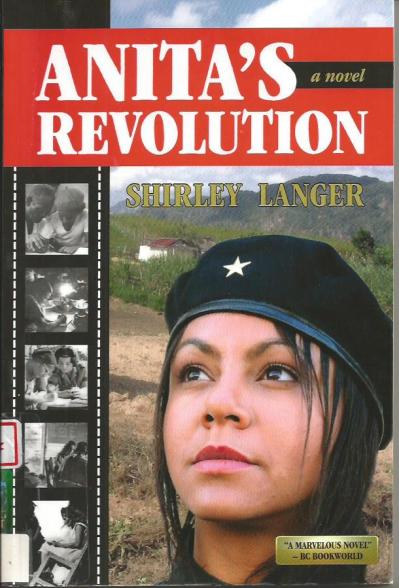Anita, the protagonist of Anita’s Revolution, is a young teen in 1960 when Fidel Castro announces to the United Nations and the world that Cuba will stamp out illiteracy by the end of 1961. To accomplish this extraordinary goal, he elicits the aid of Cuba’s youth. In 1961 more than 100,000 volunteers answered the call—many of them students, along with teachers and others. They streamed across the island with energy and enthusiasm. The fictional Anita is one of them.
Anita must overcome her own fear given the real danger of volunteering, since counter-revolutionaries have killed a young brigadista. She must also overcome the concerns of her parents. She joins forces with her brother and they win their parents over, even if a bit reluctantly. With others from her school, Anita sets off for training and for the adventure of her life. Anita is a determined girl. Besides the literacy focus, Anita’s Revolution, takes us along on a journey from the innocence of a protected childhood to the awakening of a young woman.
Besides Anita’s personal story, Anita’s Revolution is a social justice story, and a story that demonstrates the very positive difference youth can make in a society. She arrived, not exactly welcomed by the people she would teach to read and write. But when she left, she left family behind.
Anita returned to her suburb of Havana knowing that more needed to be accomplished and wondering how she’d adjust into her relatively privileged life. The story doesn’t end like a fairy tale; it presents a believable girl in a real situation with the ideals and dreams of youth, but the bigger job beyond literacy isn’t finished.
Shirley Langer lived in Cuba for five years in the 1960s and writes with the immediacy of knowing a time and place. She writes with the knowledge of having lived among the people of whom she writes. During my research, I learned that she also lived for a period in the Bay of Quinte region (Ontario, Canada), which is my home. Langer has lived at Victoria (British Columbia, Canada) since 1995.

Available through your local bookstore or online: Anita’s Revolution
Cuba aficionados will also want to see my review of A Simple Habana Melody for a pre-revolutionary novel. And perhaps two of my travel blogs: A Cultural Portal: Windows and Doors and scroll through my travel blog.
Readers and writers of YA fiction, will want to take another look at The Great and the Small, a YA novel by A.T. Balsara that I reviewed last February.

It’s not often that novels are about youth making and changing history, so I am grateful to Kathryn MacDonald for her insightful review of my book, Anita’s Revolution, which celebrates youth doing just that in Cuba in 1961. I’m proud to say that Anita’s Revolution has recently been translated into Spanish and published in Cuba as “Anita La Brigadista”.
LikeLiked by 1 person
As an historical novel, Anita’s Revolution is the best of both fiction and history. An engaging story complete with romance and adventure it also is the accurate telling of an amazing feat accomplished by the youth of a “new” country, the accomplishment of bringing literacy to everyone in Cuba, no matter if their home was remote or their formal education lacking.
The story of Anita and those she teaches captures the excitement of a country which pulled together to accomplish something great, as well as the personal excitement of what it means to be able to read.
Shirley Langer’s book is entertaining to read and also educational and inspiring; good for adults and youth alike, it is illustrated with photographs of the literacy campaign which really bring the story alive.
LikeLike
It’s not my first time to go to see this site, i
am browsing this web site dailly and obtain pleasant information from here
daily.
LikeLike